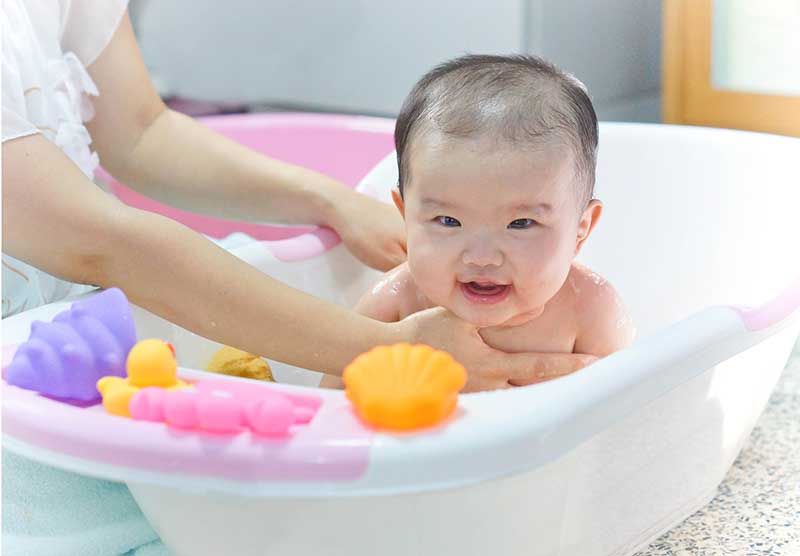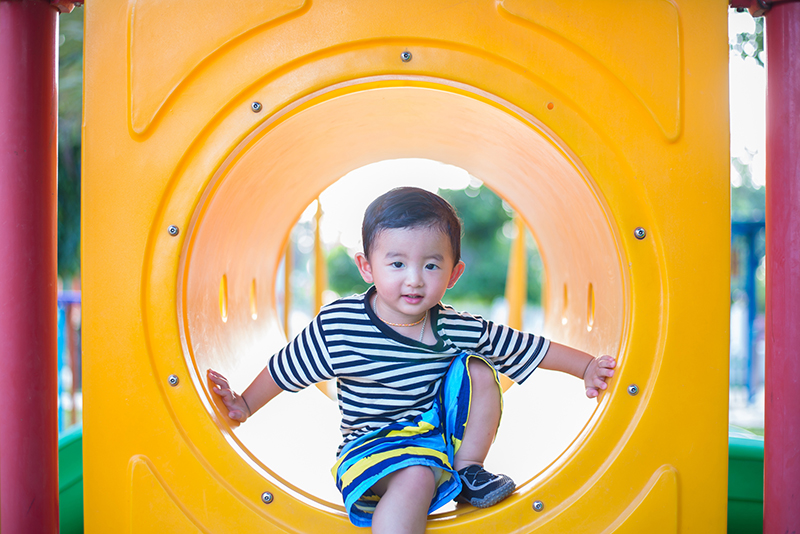Families For Life | Playground Safety: Children 1-8 Years-Toddlers

DID YOU KNOW?
Bath time is a good way to soothe your baby but it can also be a fantastic learning opportunity for your child. Learn how you can engage him during bath time.
READ MORE

Playgrounds are great places for your child to play outdoors with other children, have fun and test physical skills. Supervision is the best way to ensure playground safety and prevent outdoor injuries.
Playgrounds and playground safety
Children get so much good out of playing in playgrounds. Outdoor play is great for their physical, social and thinking development.
Most playground injuries are minor – cuts, bruises and a few tears are the most likely dramas at playgrounds. But every now and then falls from playground equipment can also lead to more serious injuries.
The most common playground injuries are fractures and dislocations. These injuries happen when children fall from equipment like climbing frames, monkey bars and slides.
Children are most often injured falling from monkey bars, mostly because monkey bars are high up. But children also hurt themselves falling from slides, swings, trampolines and climbing frames.
Preschoolers and primary school-age children are most likely to hurt themselves, because they’re still developing physical coordination, muscle strength – and the judgment they need to work out whether jumping from the monkey bars is a good idea!
Most injuries in the playground aren’t very serious, and fatal incidents are rare. All playground equipment must, as a minimum, comply with SS 457:1999, the Singapore safety standard for playground equipment and surfacing.
Having fun and staying safe in playgrounds
The best way to help your child avoid bumps and bruises in playgrounds is to actively supervise your child at play.
By staying close to your child, especially when she’s trying something new or complicated, you help keep playground visits safe and give your child the confidence to develop movement and social skills.
And as part of supervising your child, why not get into playing with him? This can be great fun for both of you.
Injury prevention and playground safety: tips
These tips can help you keep your child safe and avoid injuries in parks and playgrounds:
Buckle your child into the swings – she’s far less likely to fall out.
Gradually introduce your child to activities on monkey bars, climbing frames, swings and slides. For example, start with equipment that’s close to the ground and activities that your child is comfortable with.
Look for a safe ground surface in your playground. The equipment should be set in a thick layer of certified organic mulch or soft rubber flooring (about 300 mm deep is recommended). If hard surfaces are exposed or mulch levels are too low, report it to your town councils so they can fix it.
Look for a playground located further away from a carpark or the road. This will help to stop young children from escaping on to the road. It also makes it much easier if you’re looking after several children at once.
If your child is under three years, try to stick to playground equipment less than 1 m in height.
If your child is aged 3-5 years, try to stick to playground equipment less than 1.5 m in height. For example, you could look for small slides and rockers.
If your child is older than five years, encourage him to stick to equipment that is no higher than 2 m off the ground.
Although playgrounds are popular places for your child to play outdoors, they aren’t the only option. You can read our article on outdoor play to learn more about the many ways your child can play outside.
© raisingchildren.net.au, translated and adapted with permission
Explore more